By William F. Floyd, Jr.
The British flotilla moved with determination into the Loire estuary after midnight on May 28, 1942. An occasional searchlight from the German antiaircraft batteries stabbed at the waters but failed to detect the stealthy ships. British bombers had dropped their bombs on the German installations at the deepwater port a short time before. Although fire from the German antiaircraft batteries eventually subsided, Captain Karl Conrad Mecke, commander of the 22nd Naval Flak Brigade, suspected that something unusual was afoot because the bombers dropped one bomb at a time rather than their entire loads. He instructed the gun crews to remain vigilant.
A dozen German searchlights snapped on at 1:20 AM. Mecke had received a credible report that a group of suspicious vessels was in the area and ordered his men to intensify their search efforts. The Germans soon spotted the suspicious vessels. The operator of a German signal light asked the HMS Campbeltown, which was flying a German ensign, to identify herself. The signalman on the British destroyer responded with the call sign of a German destroyer, and the ship was allowed to proceed.
But the reprieve was short lived. Soon the air was alive with fire from the coastal defense units. German heavy guns boomed loudl,y and blue-green tracers from German machine guns crisscrossed wildly through the night sky. Lt. Cmdr. Sam Beattie of the Campbeltown gave orders for full speed ahead, and the vessel, which carried 9,000 pounds of explosives on a time- delay fuse, thrust forward at 20 knots. The British flotilla returned fire, and their bright orange tracers raced toward the shore in response. The Campbeltown’s target was the Normandie Dock, which she would reach in five minutes.
The destroyer ripped its way through the antitorpedo net stretched across the lock at 1:34 AM. The explosive-laden ship collided with the lock’s steel gate with a great grinding sound. The bow crumpled and came to rest on the unmovable obstruction. Commandos aboard the Campbeltown and the many motor launches accompanying it leaped onto the dock. After long months of planning and training, the St. Nazaire raid had finally begun.
The Atlantic port of St. Nazaire was a dream come true for the German Kriegsmarine. The German Navy inherited the sprawling dry dock and repair facilities through its conquest of France in June 1940. The Germans began constructing submarine pens in February 1941 that were capable of withstanding Allied bombing. Sixteen months later they had completed 14 U- boat berths.
British Prime Minister Churchill and the British Admiralty were deeply concerned all the while that the Germans would be able to service the Bismarck and Tirpitz battleships at St. Nazaire and use the port as a base for raiding Atlantic shipping. Because of this, Churchill tasked British Chief of Combined Operations Lord Louis Mountbatten in January 1941 with developing plans for a seaborne commando raid that would destroy the port’s infrastructure. Although the British sank the Bismarck in late May 1941, the British remained deeply concerned that the Germans would move the Tirpitz from Norway to St. Nazaire.
The basic plan for Operation Chariot, as the raid was called, was to destroy the Normandie Dock. The dry dock takes its name from the passenger liner Normandie, which was berthed at the dock between cruises. The French had built the Normandie Dock over a four-year period beginning in 1928. The plan called for ramming the explosive-laden HMS Campbeltown into the lock gates under cover of night. Accompanying the British destroyer would be two escort destroyers, 14 wooden-hulled motor launches, one motor gunboat, and one motor torpedo boat. The small boats would furnish covering fire and evacuate the raiding party. A force of 200 commandos would destroy as many of the dry dock facilities as possible in less than two hours.
The strategically important port of St. Nazaire is situated on the right bank of the Loire estuary six miles from the Bay of Biscay. The mile-wide estuary contains a deepwater channel near the north bank. The Germans had taken ample precautions to defend it.
When it became obvious to the planners that laying the charges by hand to the Normandie Dock would take far too long, they decided to ram a ship into the southern caisson. The initial plan had called for the use of two destroyers, one for the ramming and one for withdrawing the commandos, but the British Admiralty balked at using two destroyers when they could hardly spare one due to the intensity of the U-boat activity in the Atlantic Ocean.
Mountbatten fought an uphill battle convincing Royal Navy and Royal Air Force offi- cials to commit to the plan because they regarded it as a suicide mission. The commandos would be heavily outnumbered. Combined Operations Headquarters, the department responsible for planning raids that involved combined Army and Navy forces, worked closely with multiple intelligence agencies in planning the raid.
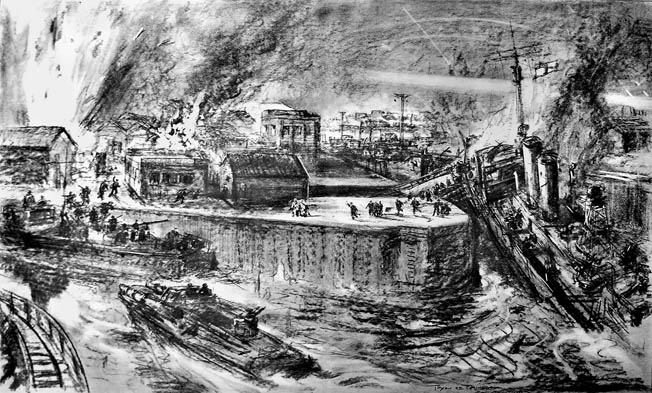
The Naval Intelligence Division gathered information from many different sources. The Secret Intelligence Service furnished detailed plans of St. Nazaire. The War Office’s Military Intelligence branch assembled intelligence on German coastal artillery. Information on the dock itself came from prewar technical journals. The Royal Navy’s Operational Intelligence Center selected the best route and best time for the raid based on information on the location of minefields. The Air Ministry’s Air Intelligence Division obtained information on Luftwaffe patrols in the area. Last but not least, German recognition signals were obtained from the Enigma cipher machine.
As part of the planning, technical specialists were called upon to develop detailed engineering drawings of the dock gates. Allied spies furnished invaluable information regarding the dock facilities and the adjacent submarine pens. The planners hoped to brief the commandos so thoroughly on the dry dock that they would be able to move around St. Nazaire with the same ease as the German soldiers who guarded the facilities.
A great deal of time and effort was put into preparing the Campbeltown for the raid. The ship was actually the USS Buchanan, a U.S. Navy destroyer that had been transferred to the Royal Navy through the Lend-Lease pro- gram. The Campbeltown was taken to Devonport, England, where shipyard personnel remodeled the ship to make it resemble a German destroyer. The workers gutted most of the interior and removed from the deck the ship’s three 4-inch guns, torpedoes, and depth charges. They also cut off two of her four stacks and shortened and repositioned the remaining two stacks to better resemble a German Mowe-class destroyer. Additionally, the workers installed extra armor plating and weapons systems so the British crew could return fire if necessary.
Next, they filled each of 24 Mark VII depth charges with 400 pounds of explosives. The depth charges were encased in a steel tank and placed over fuel compartments just aft of the support for the forward gun. The tank was then sealed off with concrete. The explosive charge would be detonated by time-delay pencil fuses after the commando raid was over. The workers placed scuttling charges in the stern of the Campbeltown so the ship could be sunk in place, blocking the entrance to the dry dock.
Commandos from Britain’s all-volunteer Special Service Brigade would carry out the demolitions work against the dock infrastructure. Lt. Col. Augustus Charles Newman was given command of the commandos. The men spent six weeks training at Cardiff, Wales, and Southampton, England. In Southampton they were able to practice at the King George V Dry Dock.
The commando teams studied the mechanics of the dockyard infrastructure, such as locks, pumps, and power stations, which they were to destroy. Although they did not practice with real explosives, their practice sessions were as realistic as possible. The goal was to teach each team of commandos to set its explosive charges in 10 minutes or less. About half the men would be involved in setting charges, and the other half would furnish covering fire. Newman told his commandos that there was little chance that they would be safely evacuated at the end of the raid. When given a chance to back out of the mission, none accepted the offer.
A final dress rehearsal was held on March 22. From the experience, the participants realized that the German searchlights were likely to interfere substantially with the flotilla’s navigation and the embarkation of the commandos. But there was really nothing that could be done about the searchlights.
The attacking force cleared Falmouth harbor at 2 PM on March 26. The flotilla consisted of the Campbeltown, escorting destroyers HMS Atherstone and HMS Tynedale, 14 wooden-hulled motor launches, Motor Gun Boat 314, and Motor Torpedo Boat 74. Commander Robert Ryder, who was on board the motor gunboat, was the flotilla’s senior naval officer and overall commander.
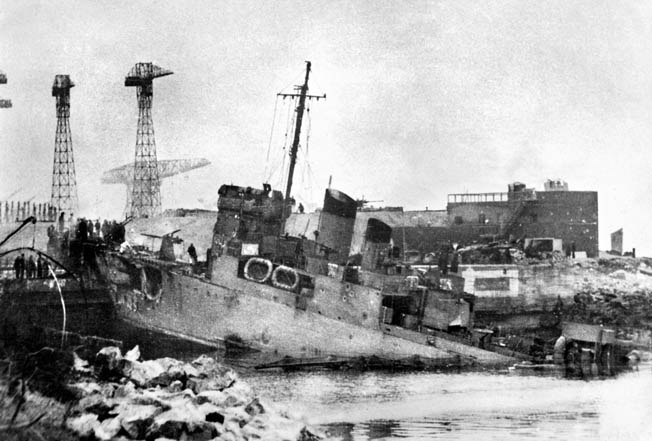
The launches carrying the commandos were Type B motor launches that were 112 feet long and 18 feet wide, displacing some 65 tons. They had a speed of 20 knots, were armed with 20mm guns, and carried a crew of two officers, 10 sailors, and 15 commandos. As they headed across the English Channel, they formed into three lanes with the destroyers in the middle lane.
The Germans had 6,000 men stationed in the area, including a brigade of the 333rd Infantry Division deployed nearby. St. Nazaire was second only to Brest in being the best defended harbor in France. German Kriegsmarine Vice Admiral Karl Dönitz had personally inspected the defenses and deemed that the Allies were unlikely to launch a limited attack from the sea. Shore batteries lined both sides of the estuary. In addition, there were searchlights and automatic weapons throughout the town and covering the approaches to the harbor.
After the Campbeltown crashed into the Normandie Dock caisson, three groups of commandos stormed ashore and began their mission. The groups were to carry out their destructive work as quickly as possible and then rendezvous for evacuation at either the Old Entrance, near the dry dock, or the Old Mole, a pier situated a short distance south of the dry dock.
The majority of the targets were west of the caisson. The only commandos to disembark on the starboard side were 13 men led by Lieutenant Johnny Roderick. His team was assigned to knock out three gun positions located between the Normandie Dock and the Loire. After that, the team was to set fire to the underground fuel storage tanks.
Roderick’s men, who had heavy firepower in the form of submachine guns and light machine guns, made quick work of a nearby sandbagged enemy gun emplacement before proceeding to their next target. They hurled multiple grenades to knock out a rapid-firing 37mm gun on the roof. When the occupants of the concrete bunker tried to flee, they were riddled with bullets. Roderick’s team then silenced another gun and a searchlight beyond it before moving on to clear the area to the south. When his group reached the underground fuel storage tanks, they dropped incendiary charges down the ventilator shafts. For some inexplicable reason, the charges failed to ignite the tanks.
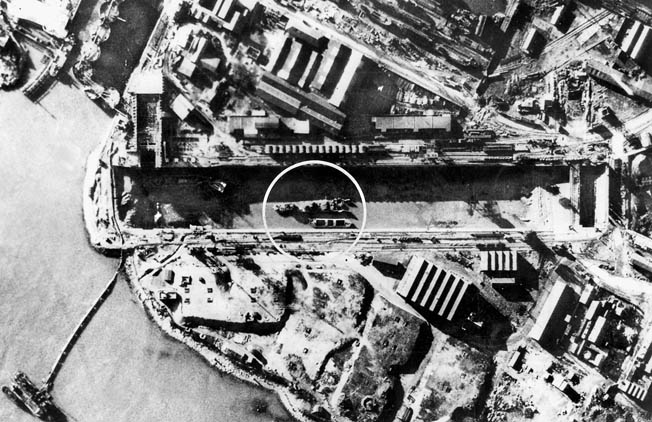
While Roderick was busy in his area, Cap- tain Donald Roy’s men had gone over the port side. Their first objective was to knock out two guns situated on top of the pump house. The German crews scattered, though, and Roy and one of his men ran up the stairs to the guns and put explosive charges on them. The team’s next target was the Old Entrance Bridge, which they were to hold so that the other teams could cross on their way to the Old Mole for evacuation. Roy’s commandos seized the bridge and established a defensive position at the north end, covering all approaches to the bridge. They soon came under fire from enemy ships and from German troops on the roof of the U-boat pen. The plan had been for Roy’s commandos to withdraw from the bridge as another demolition team, led by Lieutenant Mark Woodcock, blew up the bridge. But Woodcock’s team, which was on ML-262, had not been dropped off in the right place because the captain was blinded by the searchlights and the launch had come under a blizzard of fire from the Germans.
Behind Roy’s team, Lieutenant Stuart Chant, who already had been wounded in the right arm and left leg, led his demolition team toward the dock’s pumping station that Roderick had just occupied. Their task, which was to destroy the pumping house and the machinery inside, was perhaps the most important of the demolition objectives. Inside the pump house was the machinery that emptied the dry dock so that repair could go forward on the ship inside it. A successful attack on the pump house could knock the dry dock out of commission for at least a year if not longer.
Chant’s group put a small magnetic charge known as a clam on the locked doors. When the explosive blew open the doors, they plunged into the bowels of the pump house, moving toward the machinery 40 feet below. One of Chant’s men, who was wounded and could not walk, was left to guard the door. Sergeant A.H. Dockerill carried both the wounded man’s 60-pound pack of explosives and his own down the long steel stairs.
Chant and his men set 40 pounds of plastic explosives on each pump. They had practiced this task blindfolded during training, and therefore the darkness they encountered at the bottom of the pump house posed no challenge to them. Once the charges were set, Chant ordered all his men upstairs except Dockerill, who remained with Chant in case his wounds prevented him from igniting the charges. The explosives blasted the structure into concrete rubble, sending the pump motors into the crater below.
Chant and his men then rushed toward the bridge that led to the Old Mole but found the bridge swept by German fire. He and his men then ran under the bridge and swung hand over hand along the girders to the other side.
While the commandos were going about their destructive work, the waters along the jetty were full of mayhem as the crews of the motor launches tried to carry out their respective missions while under intense fire from a multitude of German guns. The Germans destroyed multiple launches, and there was great loss of life among the small boat crews. At one point a German trawler began picking up wounded British sailors floating in the water. They were forced to lie on the deck and guarded with rifles. As the operation wound down, Commander Beattie was taken prisoner.
By 2:30 AM, a number of the commandos had assembled for evacuation, but the major- ity of the motor launches had been destroyed. The German fire was so intense that no small boats remained in the area to evacuate the commandos. Newman told the men that they would have to split up and try to get back to England on their own. He suggested they try to link up with French Underground groups. “Well chaps, we’ve missed the boat,” he said. “We will just have to walk home.” The survivors then fought their way into the town. Most of the brave commandos who participated in the raid were slain or captured. Only five made it back to England.
The demolition experts had set the explosives in the Campbeltown to detonate at 4:30 AM on March 28. But because of what was believed afterward to be a malfunction in the detonators, the massive explosive charge detonated instead at 12 PM that day. The explosion inflicted enough damage to the dry dock that it remained unusable for the duration of the war. As for the Tirpitz, it never left the protection of the Norwegian fjords and never entered the Atlantic Ocean. The Royal Air Force attacked it repeatedly with bombers, finally destroying it on November 12, 1944.
Approximately 360 Germans were killed in the massive St. Nazaire blast. Not unexpectedly, British casualties were heavy. Of the 611 men who participated in the raid, 168 were killed and 200 captured by the Germans. But they did a stunning amount of damage. Only five of the small boats were able to rendezvous with the two escort destroyers for the return voyage.
The British were proud of the damage wrought during what came to be regarded as the “greatest raid of all.” The British government awarded 89 military decorations to participants of the raid. The Victoria Cross, Britain’s highest award for valor, was given to Beattie, Newman, and Ryder, each of whom survived the raid, and awarded posthumously to Sergeant Thomas Durrant, who manned a twin machine gun on Motor Launch 306, and Able Seaman William Savage, who manned the forward two-pounder gun on Motor Gun Boat 314.
The results of the raid are best measured in relation to its effect on the overall war effort. The raid on St. Nazaire occurred at a time when the Third Reich was strong and Great Britain needed a successful operation to boost morale for the long fight that lay ahead. The raid achieved that goal and much more.
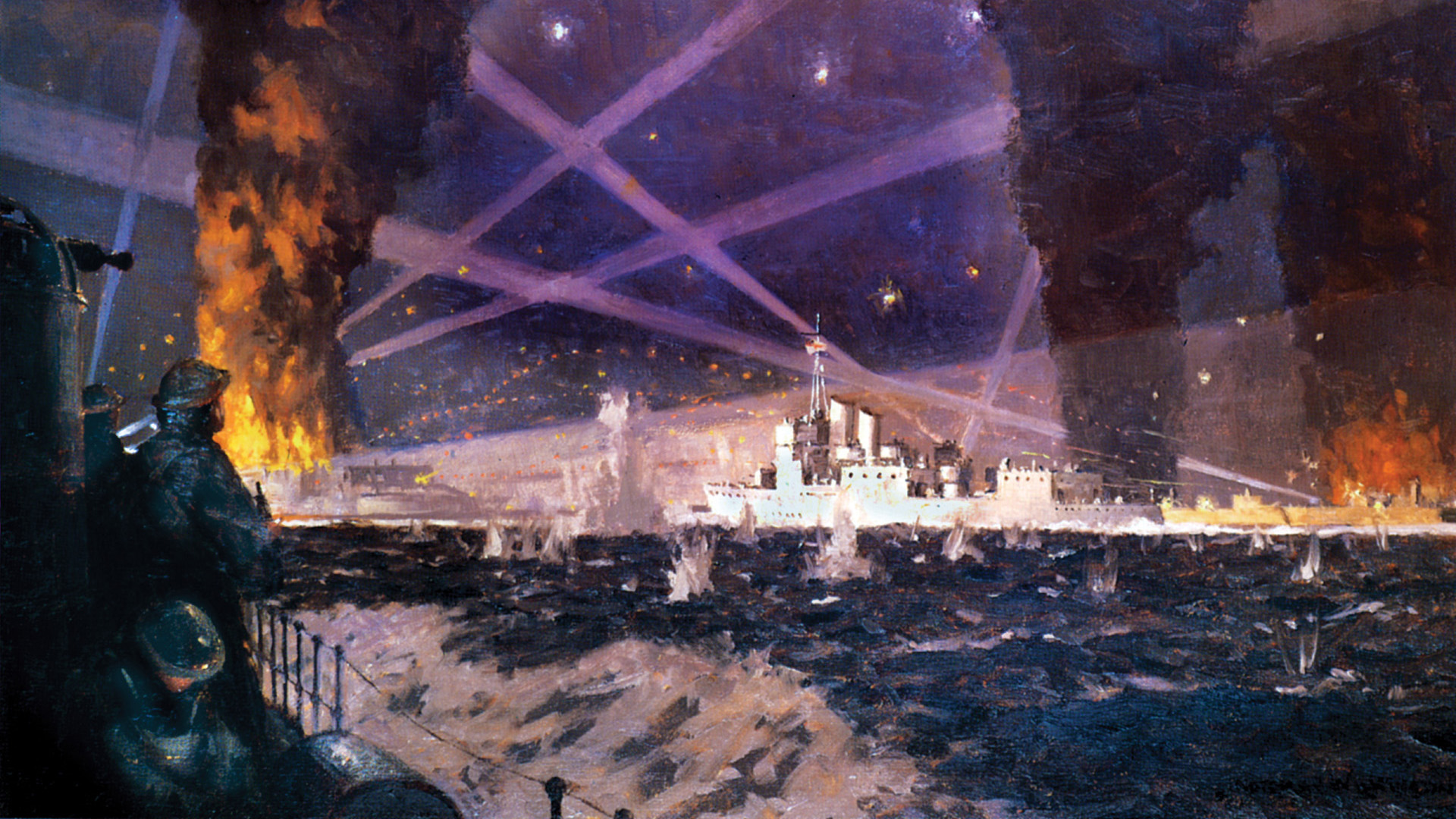
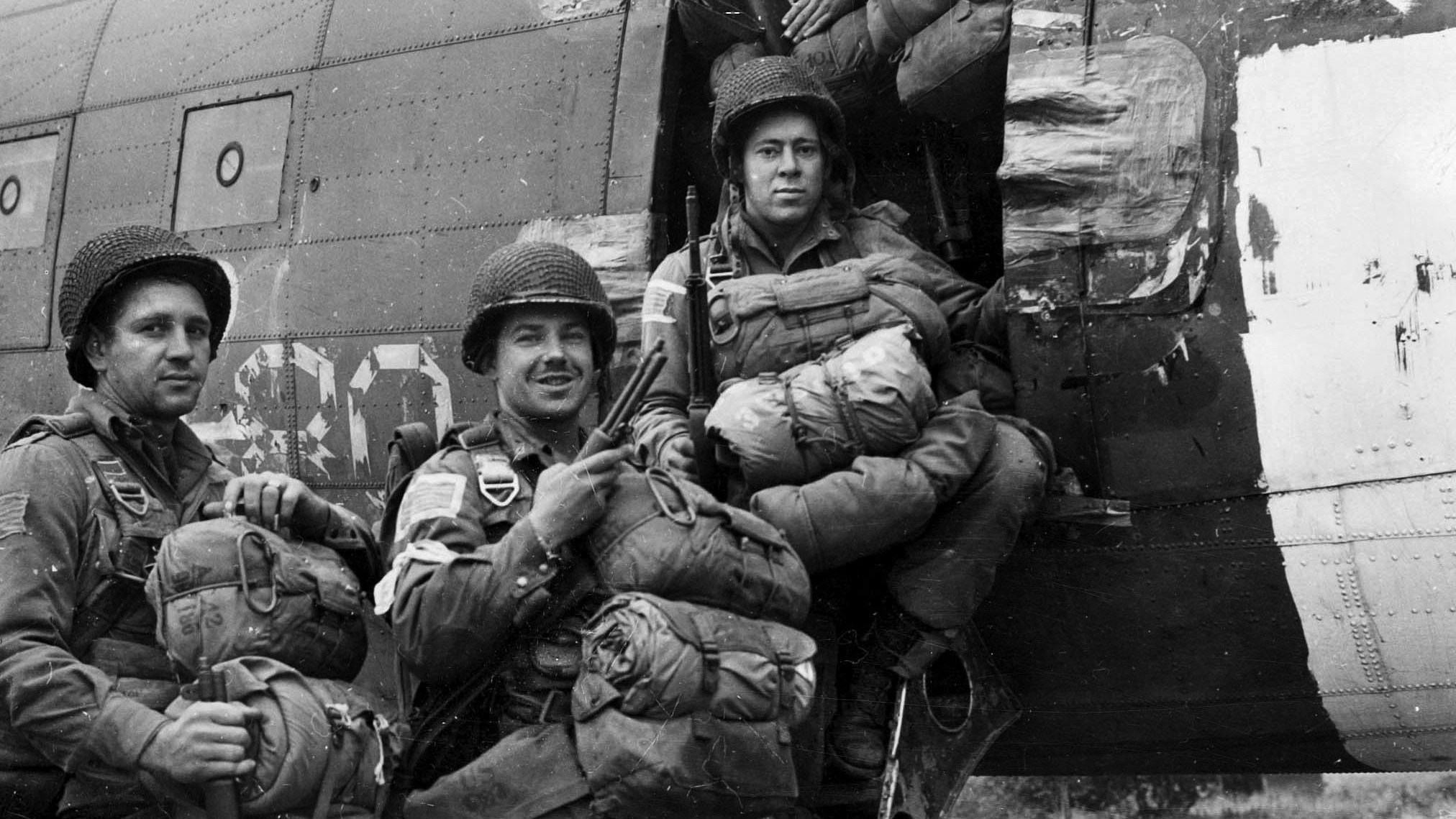
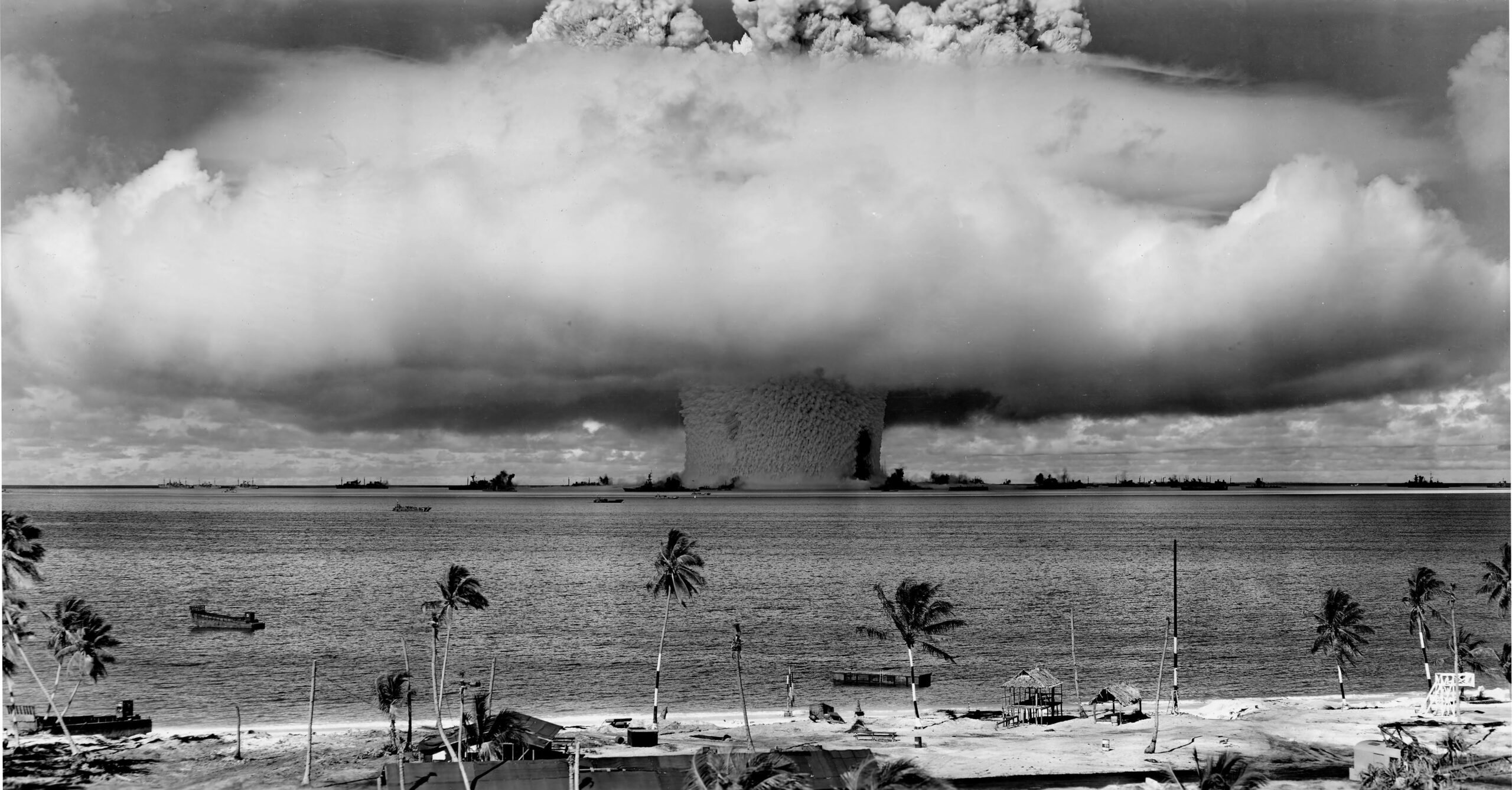
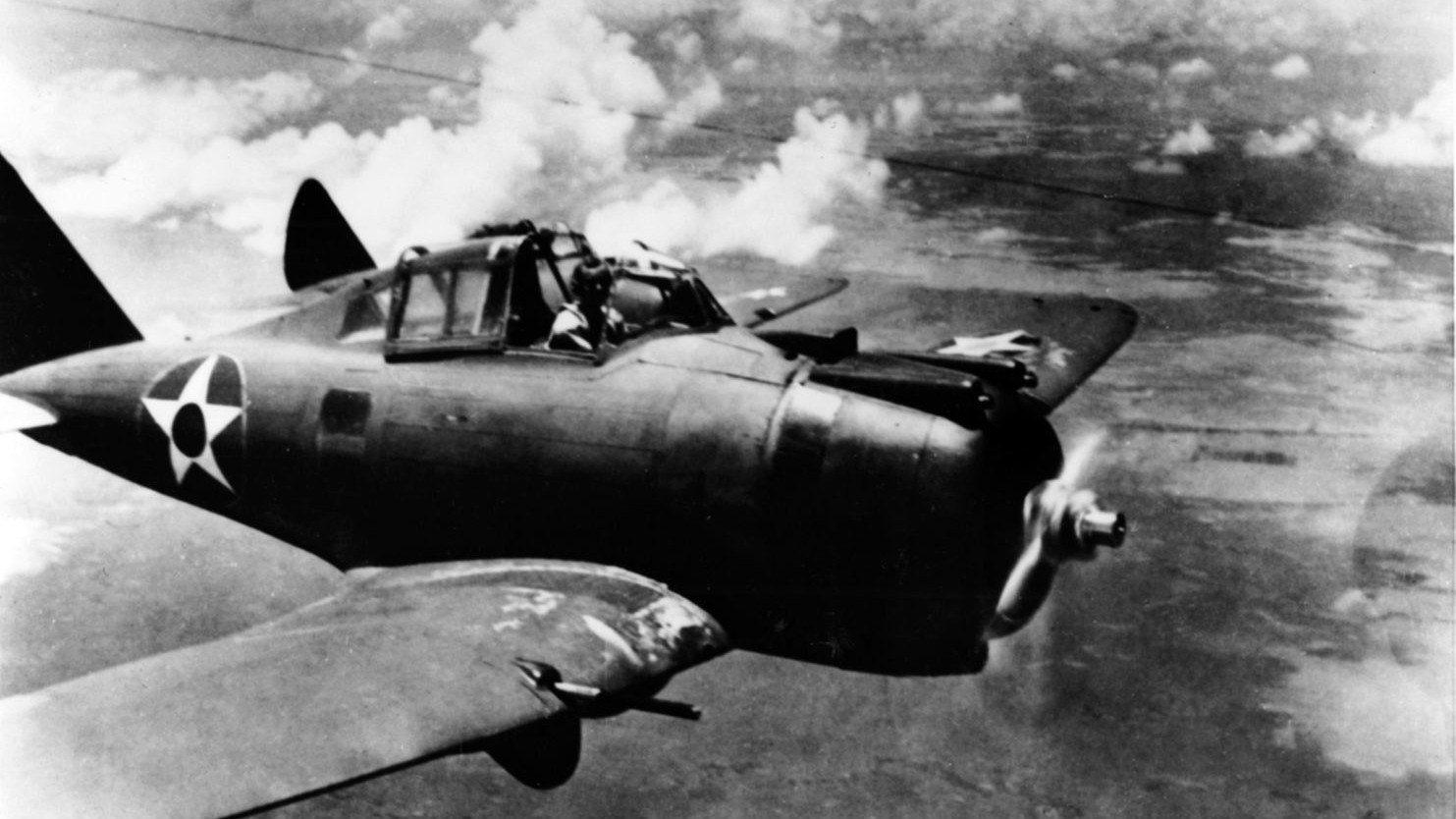
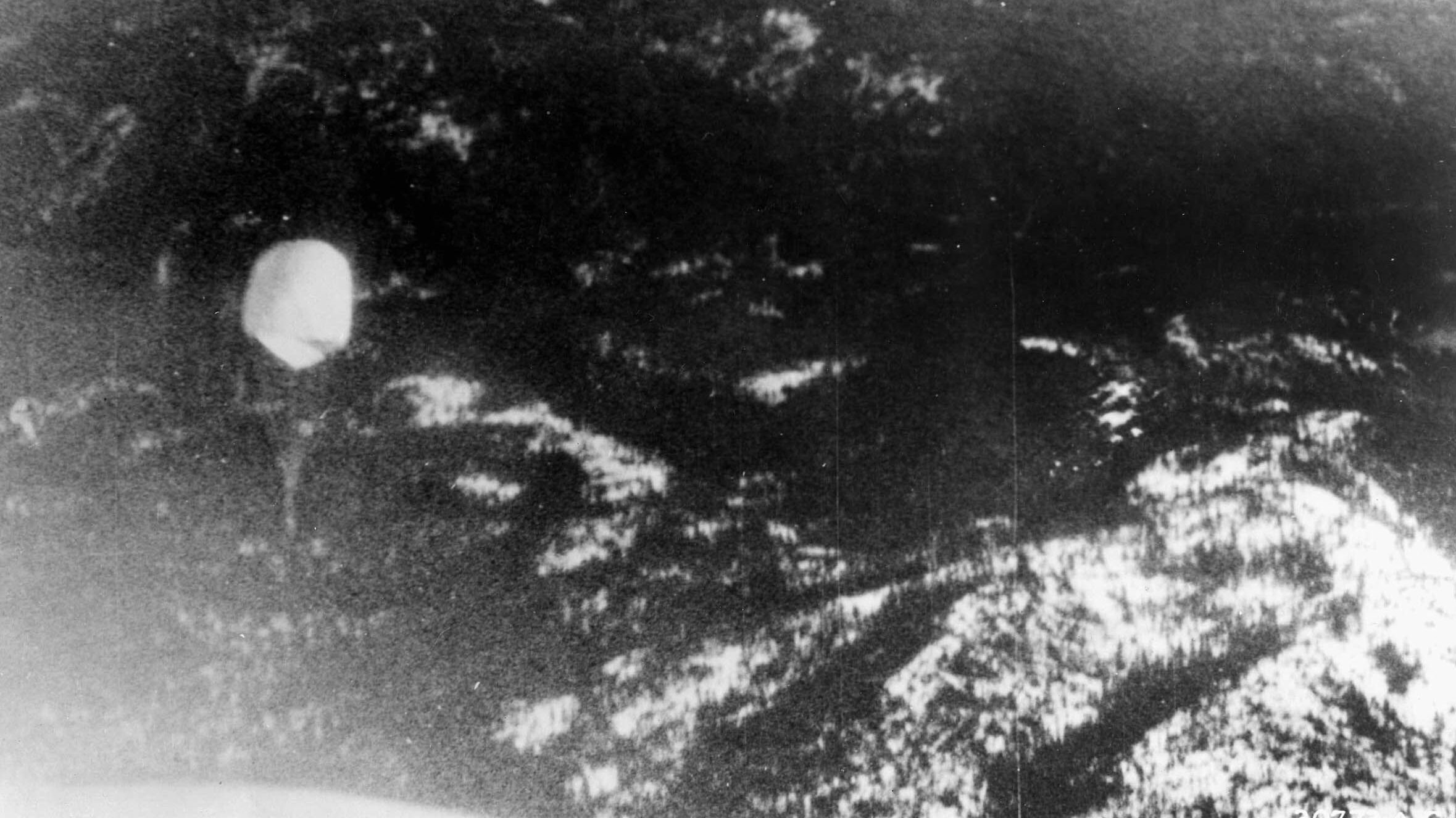
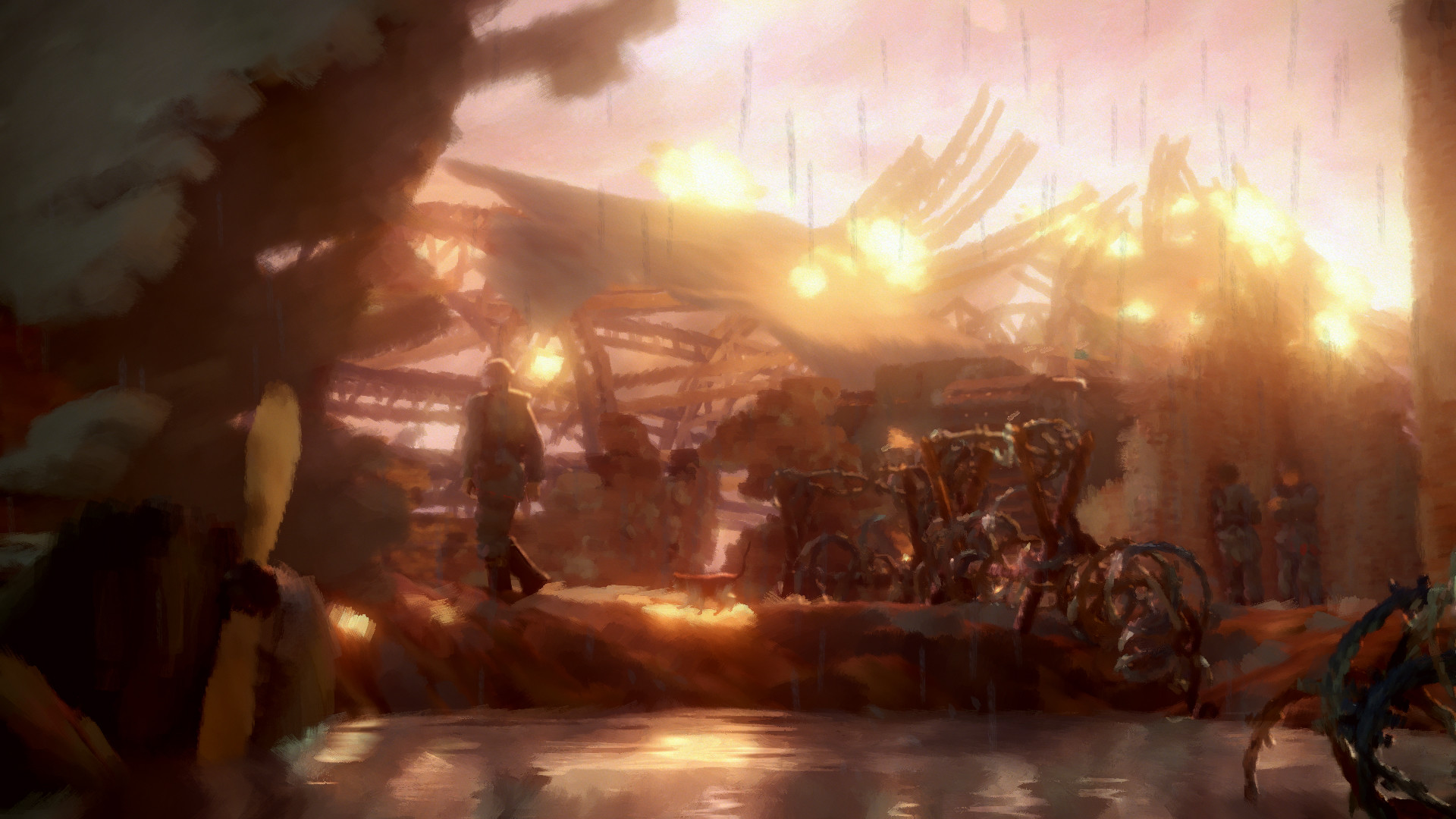
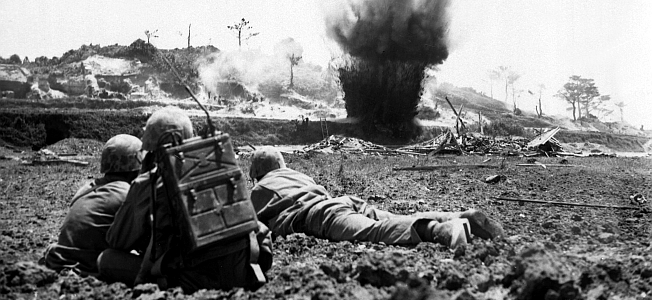
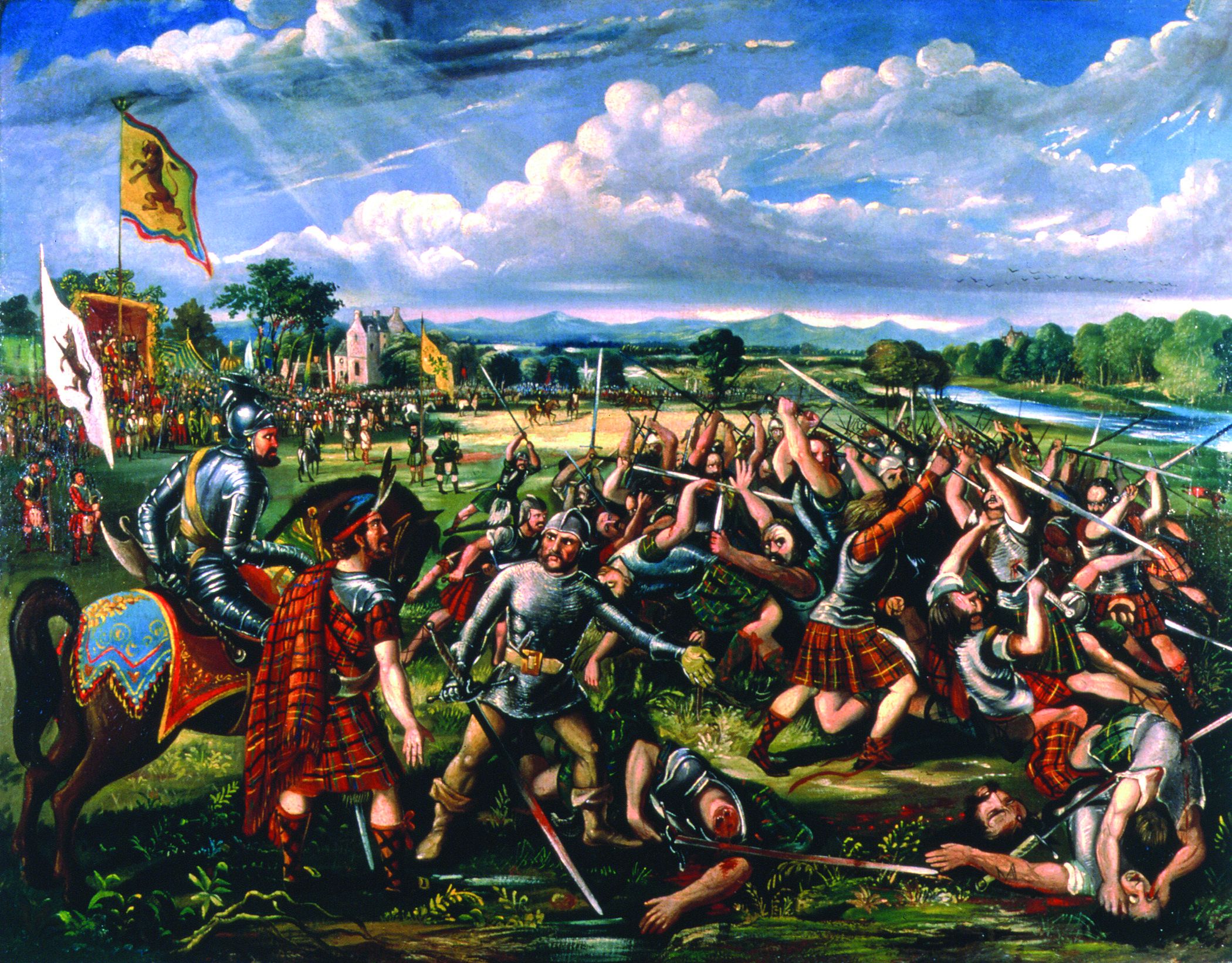
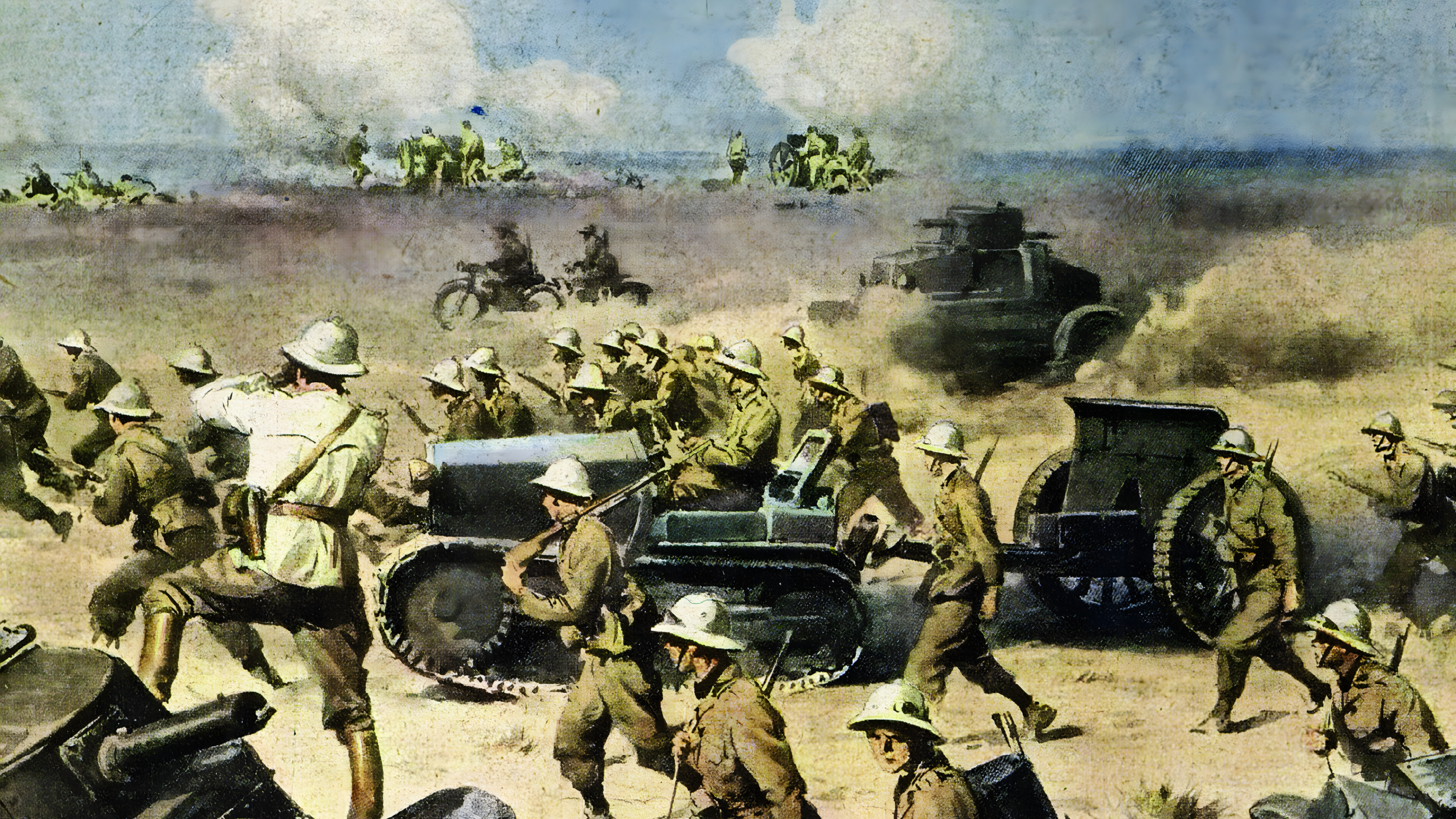
Join The Conversation
Comments
View All Comments